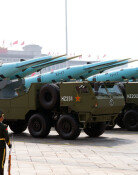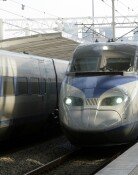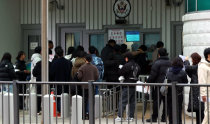[Opinion] Goguryeo Comes to Seoul
[Opinion] Goguryeo Comes to Seoul
Posted April. 26, 2005 23:34,
Goguryeo was the first country to actually become the regional center of Northeast Asia. Led by Gwanggaeto the Great and King Jangsoo, Goguryeo in the 5th century was the substantial superpower of the Northeast Asian region. Once, a New Years banquet was held in Northern Wei, which unified northern China during King Jangsoos rule. The Goguryeo delegation was also invited to the festival, and the Qi Dynasty, which conquered the southern part of China, strongly opposed this. It contended that the Goguryeo delegation could not be ranked the same as theirs. The reaction of Northern Wei was simple: We have no choice because Goguryeo is a strong country.
Goguryeo clearly played the role of balancer based on its power that enabled the country to dominate Manchuria and the northern part of the Korean Peninsula. By appropriately taking advantage of the conflict between Northern Wei and the Southern Dynasties, those ruling the northern and southern parts of China, Goguryeo prevented both of them from tempting its own country. It allied with Silla when Baekjae joined forces with Kaya and Japan. Chinas claim that Goguryeo was a mere local government is laying bare its unreasonableness and ignorance towards history. Another aspect of Goguryeo that we can take pride in is its economic and cultural levels that befit the Northeast Asian hub.
Anhak Palace, which was built in Daedong River by King Jangsoo, was the biggest palace ever throughout Korean history. Changan (currently known as Pyongyang) was known to be a large city home to one million people with 200,000 households. The mural that first comes into mind when speaking of Goguryeo is one that cannot be created without the foundation of the national power. Goguryeo murals were in frescoes that plastered the inner side of the grave and painted on the top with pigments. They are sufficient to demonstrate the level of the country as the paintings require high-level of painting and architectural skills as well as huge financial resources.
Sixty pieces of Goguryeo relics possessed by North Korea came over to Seoul. The works will be exhibited at the Culture of Goguryeo exhibition starting May 7 in Korea University, commemorating its 100th anniversary of establishment. This is a valuable opportunity for people in the South as there barely are Goguryeo relics in South Korea. I hope this event not only showcases the splendor of Goguryeo culture, but also exhibits the prosperity and glory enjoyed by its people.
Hong Chan-shik, Editorial writer / chansik@donga.com



![화장실 갇혔을 때 생존법…“최후에는 변기뚜껑” [알쓸톡]](https://dimg.donga.com/c/138/175/90/1/wps/NEWS/IMAGE/2025/12/26/133042007.3.png)



